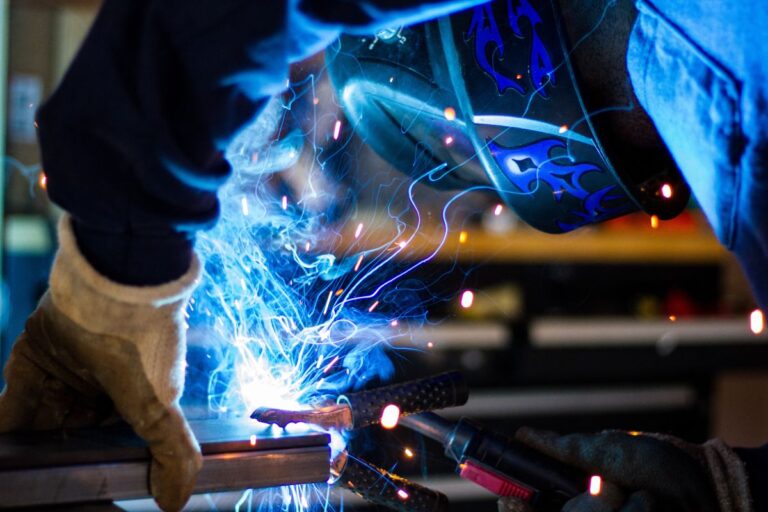Managing Safety When Welding
Welding is one of the most necessary and useful aspects of production and fabrication. However, there is no escaping the fact that welding is inherently dangerous. Being considered “hot works”, welding exposes welders to numerous potential hazards, some of which can result in severe injury or death if not properly managed.
Let us take a look at some of the hazards present in welding, particularly arc welding – the most commonly used welding technique – and how to weld safely.
Ventilation
While the welding of most common metals does not produce overly hazardous fumes, welding that involves things such as rod fluxes or materials that contain lead, cadmium, mercury, fluorine compounds, beryllium or zinc, for example, can be extremely hazardous. Inhaling such fumes without proper ventilation can lead to suffocation and even death.
Regardless of the material being welded, it is important to ensure that the work area is well-ventilated. It is better to err on the side of caution. In the case of working with materials that create hazardous fumes, proper ventilators and/or gas masks should be provided to those working on or near the weld.
Fire
Welding involves super-heating metals to melt them and bond them. Naturally, this kind of extreme heat creates a significant fire hazard, which should be very carefully monitored and controlled by competent and well-trained personnel.
Any workspace wherein welding is taking place should be free of flammable materials, liquids or gases. Moreover, a welding workspace should have ample fire extinguishing equipment or infrastructure at the ready, and staff should be well-trained in fire containment procedures and emergency evacuation protocols.
PPE
Owing to the highly dangerous nature of hot works, it is vital for welders to be fully decked out in the appropriate personal protective equipment (PPE).
For starters, proper eye protection is critical. The brightness of the sparks caused by welding can cause severe eye damage, leading to permanent blindness. Photokeratitis, also known as welder’s flash, is more common and is a temporary blindness that occurs when one’s eyes are not sufficiently protected during welding.
Naturally, even temporary blindness can lead to other injuries, especially when working in a hazardous environment using highly dangerous equipment.
Hand, face and body protection is also important since welding causes hot sparks and tiny bits of hot molten metal to fly off, causing burns to those not wearing the correct protective gear.
Best Welding Services Near You?
Notefull Engineering are experts in welding and fabrication, executing work to the highest standards while ensuring safety. Contact us to find out more about how we can assist you with your welding needs.







